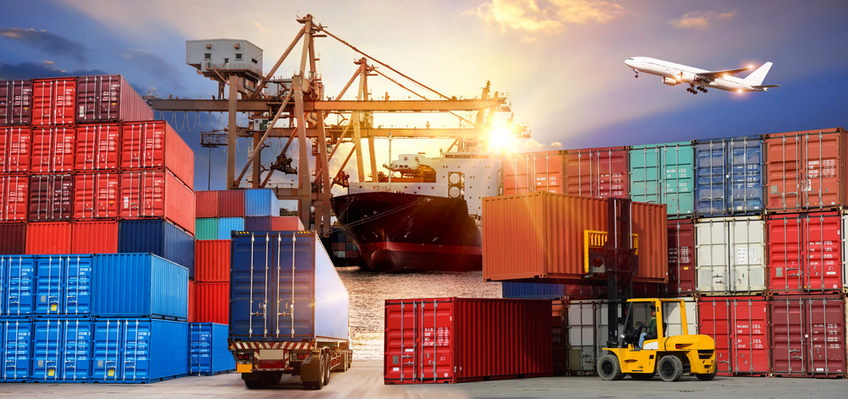
Top Tips for Cross-Border Trade with Barney Willis of We Are Pentagon
For Barney Willis, Managing Director of Managed Partners at We Are Pentagon, “if you aren’t selling internationally, you’re missing a trick”. That was the bottom line of his presentation at this year’s Payoneer London Forum, in which he laid out his top tips for cross-border trade.
In his talk, Mr. Willis touched on several topics, including the importance of dominating your local market, building a logistics infrastructure and why automation is critical to scaling up your business. Here, we’ll be going over the highlights of Mr. Willis’s talk. To watch his full presentation, click below:
The Huge Potential of Cross-Border Trade
The presentation started with an overview of cross-border trade and why it’s in every seller’s interests to take their business global. Notable points included:
- Global eCommerce is predicted to grow from $2.3 trillion sales in 2017 to $4.47 trillion in 2021.
- Cross-border trade in China alone is expected to grow from 40% to 60% in the next few years. It’s estimated to reach $140 billion by 2021.
- The technology enabling cross-border trade has greatly improved in recent years. Additionally, there are new internet users every day – roughly 11 new users globally every second.
Excel at Local Sales Before Crossing Borders
According to Mr. Willis, the first step to branching out cross-border is to dominate your local market. Specifically, this means:
- Improving your local SEO. Make sure to register for local directories like Bing places, Google My Business, etc.
- Increasing positive online reviews by focusing on having a strong returns policy, reliable logistics, and a short time to delivery.
- Using email marketing – it still yields 3x more sales than social media for a fraction of the energy and converts 17% higher.
- Targeting paid local ads.
Doing so allows you to hone your business skills in familiar territory and streamline your store before expanding into unfamiliar territories. Once you’re ready to branch out, the following six tips will help you effectively scale up your store.
Six Tips for Selling Internationally
1. Logistics
Logistics are inevitably more complex when you’re dealing with multiple territories. You must navigate between local postal systems and commercial carriers while juggling different handoffs. To deal with these new challenges, it’s important to:
- Build a strong infrastructure so you can set up a standardized approach to deliveries. You’ll usually need to create a customized system because each carrier has its own regulations.
- Once you build your logistics infrastructure, stress test it to be sure that it can withstand peak sales periods, such as seasonal events, big promotions, etc.
- Learn about the diverse shipping regulations in different countries.
- Ensure that your customers are kept in the loop. Cross-border sales are risky – you could face supply/import/customs delays, so keep it all very transparent.
- Create a backend system that supports detailed reporting, so you can evaluate your carriers’ efficiency.
2. Returns
A UPS survey found that 88% of online consumers check a store’s returns policy before making a purchase. If yours isn’t clear enough, many customers won’t buy from your store. You need a clear and simple policy that translates well to new locales but is not so lax that it opens you up to scams.
3. Legal
New laws and changes to existing regulations in the territories in which you operate are bound to come up. Think Brexit, so something like unclear jurisdictions – do product labeling laws and consumer rights go according to the customer’s country of residence or the seller’s? In short, make sure you’re up to date on new legislation and set up your contracts according to the laws of your local markets and cross-border territories.
4. Translations
Translate all product materials accurately while keeping aware of cultural nuances in each marketplace. Remember that three-quarters of people won’t purchase from a website that isn’t in their native language and 87% of non-fluent English speakers say they won’t buy from a site in English.
As well as translating to the relevant language, you need to adapt your brand to local shopping habits, user preferences, cultural and religious holidays, etc. Most marketplaces are happy to share their local promotional calendars and marketing plans.
5. Payment solutions
You want to offer as many payment solutions as possible. Processing payments in-house, however, creates several challenges, including:
- Understanding the differences in legislation in different countries
- Dealing with complex tax laws
- The need to register your business in each country to handle payments locally
6. Automation
eCommerce crosses so many channels – mobile commerce, social selling, affiliate networks, marketplaces, and sales through search and direct webstore visits.
Many companies try to handle the practicalities of cross-border trade in-house. They bring in the tech they need, and it can work for a while until the business reaches a certain point, at which it becomes unscalable. It’s far better to bring in an expert to handle the tasks of setting up a cross-border store or marketplace, so you can focus on what you do best – making sales.




